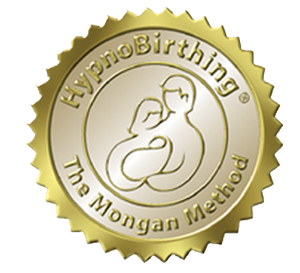
Oxytocin and Your Postpartum Journey: What You Need to Know
Childbirth is a deeply personal journey filled with emotions, physical changes, and countless decisions. Pregnant women meet with their providers regularly to discuss pregnancy wellness and birth options, which can sometimes feel overwhelming. The information presented may heavily focus on potential interventions during labor.
It’s important to remember that not all interventions are medically necessary, and some may not be supported by the latest evidence. This is especially true when considering the potential impact of medical interventions on postpartum mental health. New evidence is linking the administration of synthetic oxytocin during labor to a possible link to postpartum depression (PPD). This ongoing exploration is particularly pertinent for expectant mothers seeking to understand the intricacies of childbirth options. As they weigh their decisions, some women may find hypnobirthing, a holistic approach to labor and delivery, to be an appealing alternative.
The Essence of Oxytocin
Oxytocin, often heralded as the “love hormone,” plays a critical role in childbirth, breastfeeding, and the deepening of maternal bonds. This natural hormone facilitates labor, aids in milk ejection, and enhances maternal behaviors. However, the synthetic form of oxytocin, commonly used to induce or augment labor contractions and prevent postpartum hemorrhage, has come under investigation for its potential effects on maternal mental health post-delivery.
Synthetic Oxytocin and Postpartum Depression: A Closer Look
Recent studies have sparked a conversation about the correlation between synthetic oxytocin use during labor and the onset of postpartum depression or anxiety. A pivotal study revealed that women without a prior history of depression or anxiety, who received synthetic oxytocin during or after labor, exhibited a 32% increased risk of developing postpartum depression or anxiety. An astonishing 36% of women with a history of depression or anxiety were more likely to develop postpartum depression or anxiety if they took oxytocin. Another study echoed these findings, suggesting an elevated risk of PPD in women exposed to synthetic oxytocin during or shortly after delivery.
This growing body of research around interventions and mental health calls for a closer look at synthetic oxytocin’s use in childbirth, particularly regarding its potential effects on maternal well-being after delivery. It’s important to acknowledge, however, that research on this topic is still ongoing. The current studies can be variable, and the evidence showing the link between synthetic oxytocin and postpartum depression isn’t yet conclusive.
Systematic Review Insights
A systematic review aimed at shedding light on the connection between oxytocin and postpartum depression offers valuable insights. The review distinguished between the body’s natural production of oxytocin (endogenous) and the synthetic version given intravenously during labor. This distinction is crucial because they may have different effects.
- Endogenous Oxytocin: The review found an inverse relationship between plasma oxytocin levels and depressive symptoms in eight studies. This suggests that higher natural oxytocin levels may be protective against PPD.
- Synthetic Oxytocin: The evidence regarding synthetic oxytocin is less clear, with only four studies contributing to this area of research. These studies did not provide conclusive evidence, largely due to their heterogeneity and limited scope.
Hypnobirthing: A Natural Pathway to Enhancing Oxytocin
Hypnobirthing emerges as a compelling alternative to help minimize the risk of postpartum depression. Focusing on natural childbirth techniques, it aims to reduce fear and anxiety through relaxation, visualization, and deep breathing exercises. HypnoBirthing childbirth education classes empowers women with knowledge and tools for a serene birth experience. In addition, hypnobirthing promotes the natural production of endogenous oxytocin.
The Benefits of Hypnobirthing
Hypnobirthing offers several advantages for expectant mothers, including:
- Enhanced Relaxation: By harnessing the power of relaxation techniques, hypnobirthing reduces stress and anxiety, potentially increasing natural oxytocin levels and decreasing the need for synthetic interventions.
- Empowerment: Knowledge and preparation empower women to approach childbirth with confidence, reducing fears that can inhibit oxytocin production.
- Pain Management: Hypnobirthing techniques provide natural pain management strategies, offering an alternative to pharmacological interventions that might affect hormonal balance and mood postpartum.
- Bonding: The calm and supportive environment encouraged by hypnobirthing techniques can facilitate early mother-child bonding, supported by the natural surge of oxytocin.
Integrating Hypnobirthing into Your Birth Plan
For expectant mothers intrigued by the potential of hypnobirthing to create a positive and natural childbirth experience, integrating this approach into your birth plan involves several steps:
- Education: Attend hypnobirthing classes to learn the techniques and principles that underpin this approach. We recommend live instructor-led classes rather than video lessons.
- Preparation: Practice relaxation, visualization, and breathing exercises regularly to prepare for labor. This practice is vitally important to being able to reach a profound level of relaxation quickly on your birthing day.
- Communication: Discuss your birth plan and hypnobirthing preferences with your healthcare provider to ensure support and understanding during delivery. Do this early and often. In your hypnobirthing classes, we discuss why this is important.
- Environment: Plan for a birthing environment that supports relaxation and the natural production of oxytocin, such as dim lighting, soft music, and the presence of supportive partners or doulas.
Ending Thoughts
The relationship between synthetic oxytocin administration during labor and postpartum depression remains an area ripe for further research. While the evidence is not yet definitive, the potential risks underscore the importance of exploring natural childbirth options, such as hypnobirthing, that promote the well-being of both mother and child. By empowering expectant mothers with knowledge and natural strategies for childbirth, we can pave the way for a positive birthing experience that nurtures families’ physical and emotional health.
- Moura, A. L., et al. (2019). Oxytocin and postpartum depression: A systematic review. Frontiers in Psychiatry, 10, 269. PubMed: https://pubmed.ncbi.nlm.nih.gov/31183322
- Women’s Mental Health. (2023, January 11). Synthetic Oxytocin and Its Effect on Postpartum Mood and Anxiety. Women’s Mental Health: https://womensmentalhealth.org/posts/synthetic-oxytocin-effect-postpartum-mood-anxiety/
- Psychiatric News. (2017, February 3). Synthetic Oxytocin May Increase Risk of Postpartum Depression, Anxiety. Psychiatric News: https://psychnews.psychiatryonline.org/doi/10.1176/appi.pn.2017.3a17




Recent Comments